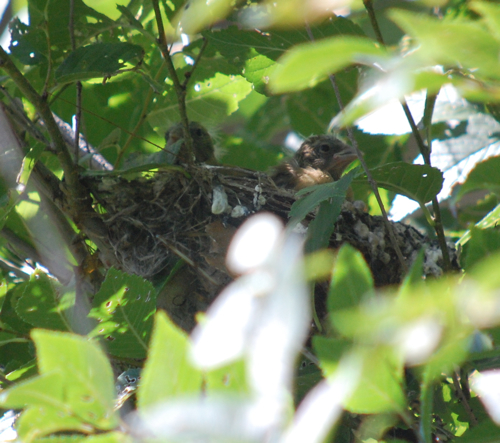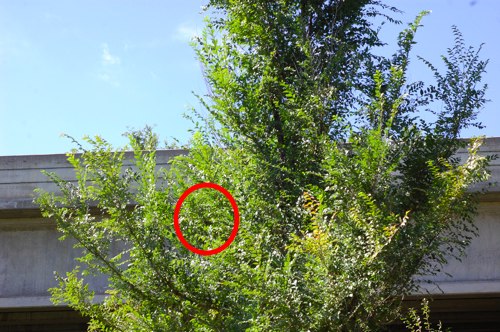Jeff Gordon had a great quote today, "The very first Snow Geese just flew in. Eleven black and white nails in summer's coffin." Which was how I felt when I saw the first juncos creeping in to the Twin Cities last week. I typically adore fall and I'm pro winter (what's the point of choosing to move to Minnesota and living here for over a decade if you don't like winter). For whatever reason, I'm not emotionally prepared for fall this year. It might be because I'm overbooked and can't enjoy fall hawk migration as much as I would like, but every sign of autumn I see from my local grocer carrying my favorite Maple Walnut Coffee to the massive amounts of Hen of the Woods popping up to the availability of my favorite Hubbard squash, I keep thinking in my little budgie brain, "STOP!"
Yesterday, I saw a bird flat that out refuse to accept fall:

I found goldfinch chicks--still in the nest being fed by an adult on September 21 in Minnesota! American goldfinches are probably our latest nesting bird. They don't start nesting until July when fibers they need for nesting material are finally available. Also, goldfinches are major seed eaters. Many people think of chickadees and cardinals as seed eaters, but they eat quite a few insects and need those for their young--they can start nesting earlier. But a goldfinch needs lots of seed available--seeds are such a large part of their diet that a brown-headed cowbird chick cannot survive in their nest. So it makes sense that they have young later in the summer when more plants will have seeds available to feed to a whole new generation of goldfinches.
However, even this seemed late to me. I emailed a friend who keeps track of these records at the Minnesota Ornithologists' Union and he said, "That is getting late. From the list of records I've compiled, the latest date of an active nest still with eggs is 30 September (Hennepin County 1894)."
I wondered if this was a goldfinch going for a second brood in a season or if the first nest failed and this is a late second attempt? If the weather stays warm, these young finches still have time to hook up with a larger flock of goldfinches and if there is a good forage route, they may survive the winter. Birds play the odds with nesting--they raise as many as possible either with a large brood or attempt more than one brood in a season to insure that at least one survives into the next breeding season.

Incidentally, this nest was right next to a highway bridge (Highway 77 to be exact). So, if you ever wonder about birds and urban noise, some birds learn to adapt and choose to nest near highways.
Good luck little goldfinches.
